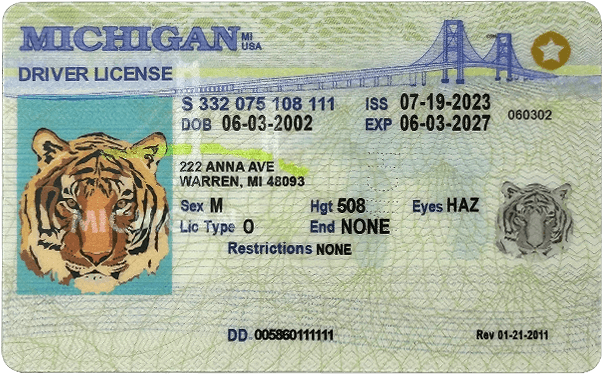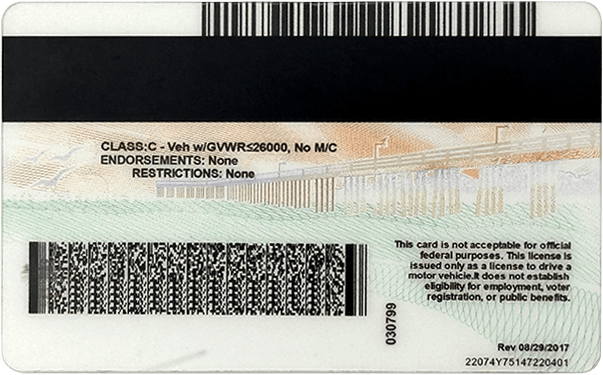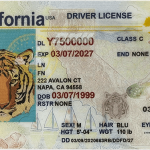In an era where mobility is a fundamental part of modern life, driver’s licenses are crucial identification and authorization documents. However, the problem of fake driver’s licenses has persisted for a long time, posing significant threats to road safety, identity security, and the proper functioning of transportation systems. As technology evolves and fraudsters become more sophisticated, it is essential to explore the future trends in combating these counterfeit documents.
Advanced Materials and Holographic Technologies
One of the key future trends in the fight against fake driver’s licenses lies in the use of advanced materials. Traditional paper – based licenses are relatively easy to replicate. In the future, licenses are likely to be made from highly specialized and difficult – to – reproduce materials. For example, some countries are already exploring the use of polycarbonate, a durable and tamper – resistant plastic. Polycarbonate can incorporate a variety of security features that are extremely difficult for counterfeiters to mimic.

Holographic technologies will also play a more prominent role. Holograms on driver’s licenses can display complex 3D images and patterns that change when viewed from different angles. These holograms are not only difficult to reproduce accurately but also serve as an immediate visual verification tool for law enforcement officers and other entities that need to check the authenticity of a license. In the future, more advanced holographic techniques may be developed, such as dynamic holograms that can change over time or in response to specific stimuli, further enhancing the security of driver’s licenses.
Biometric Integration
Biometric data is becoming an increasingly important aspect of identity verification, and driver’s licenses are no exception. Currently, some regions already include fingerprint or facial recognition data on their licenses in a secure manner. In the future, this trend is likely to expand and become more sophisticated.
For instance, iris recognition technology may be integrated into driver’s licenses. The unique patterns in a person’s iris are extremely difficult to forge. By including iris – scan data on a driver’s license, law enforcement agencies can quickly and accurately verify a driver’s identity. Additionally, palm – vein recognition, which uses the unique pattern of veins in the palm, could also be a future addition. This non – intrusive biometric method offers a high level of security and accuracy. When a driver presents their license, a quick scan of their biometric data can be compared to the stored data on the license, ensuring that the person is the legitimate license holder.

Digital Licenses and Blockchain Technology
The rise of digital technology is leading to the concept of digital driver’s licenses. Instead of carrying a physical card, drivers may be able to store their license information on their smartphones or other digital devices. These digital licenses can be encrypted and protected by multiple layers of security, such as passwords, biometric authentication, and digital certificates.
Blockchain technology can further enhance the security of digital driver’s licenses. Blockchain is a decentralized and immutable ledger that can record license – related transactions and information. Each time a driver’s license is issued, renewed, or verified, the details can be recorded on the blockchain. This makes it extremely difficult for fraudsters to manipulate the data. For example, if a fake digital license is created, it will not be able to match the legitimate data stored on the blockchain, and any attempts to tamper with the blockchain records would be immediately detectable due to its distributed nature.
Enhanced Database Systems
Existing license databases are important for verification purposes, but in the future, they will need to be enhanced. These databases will become more interconnected on a global scale. Currently, different countries and regions have their own license – issuing and verification systems, which can create loopholes for fraudsters. In the future, a more unified global database or a network of interconnected databases may be established.
These enhanced databases will also use advanced analytics and artificial intelligence (AI) techniques (without over – emphasizing the AI keyword). For example, data analytics can be used to identify patterns of fake license production and distribution. By analyzing large amounts of data, such as the locations where fake licenses are most commonly detected, the types of fraudsters involved, and the methods they use, law enforcement agencies can proactively target areas of high risk. AI – based algorithms can also be used to improve the accuracy of license verification, quickly flagging suspicious licenses based on various criteria.
Collaboration between Governments and Private Sectors
Combating fake driver’s licenses will require increased collaboration between governments and private sectors. Governments are responsible for setting regulations, issuing licenses, and enforcing laws related to license fraud. However, private companies, especially those in the technology and security sectors, have valuable expertise and resources.
For example, technology companies can develop new security features and verification systems for driver’s licenses. They can also provide services for database management and analytics. In return, governments can provide funding, regulatory support, and access to relevant data. This public – private partnership can lead to more effective anti – forgery measures. Additionally, international cooperation between governments is also crucial. As fake license operations often cross national borders, sharing information and coordinating efforts between different countries can help disrupt large – scale forgery rings.
Common Problems and Solutions
- Problem: Difficulty in Immediate Verification
Law enforcement officers often need to quickly verify the authenticity of a driver’s license during traffic stops. In some cases, the existing verification methods may be time – consuming or unreliable. For example, checking a license against a central database may take a long time, especially in areas with poor network connectivity.
Solution: Develop portable and self – contained verification devices. These devices can be pre – loaded with the necessary license data and security features. For example, a handheld device that can quickly scan a driver’s license and verify its authenticity using built – in biometric and holographic verification technologies. This way, officers can get instant results without relying solely on network – based database checks.
- Problem: High Cost of Implementing New Technologies
Introducing advanced materials, biometric features, and digital technologies for driver’s licenses can be extremely costly. Governments may face budget constraints when trying to upgrade their license – issuing systems.
Solution: Look for cost – effective solutions. For example, instead of immediately implementing the most expensive biometric technologies, start with more affordable and widely – available options like fingerprint recognition. Also, seek partnerships with private companies that may be willing to invest in the development of these technologies in exchange for long – term contracts or other incentives. Additionally, consider phased implementation, where new features are added gradually over time to spread out the cost.
- Problem: Privacy Concerns with Biometric Data
Collecting and storing biometric data on driver’s licenses raises significant privacy concerns. People are worried about how their biometric information will be protected and who will have access to it.
Solution: Implement strict privacy laws and regulations. These laws should clearly define how biometric data can be collected, stored, and used. For example, the data should be encrypted and stored in a secure, decentralized database. Only authorized personnel, such as law enforcement officers during official investigations or license – issuing authorities for verification purposes, should be able to access the data. Additionally, provide clear information to the public about the privacy measures in place to gain their trust.
- Problem: Resistance to Digital Licenses
Some people may be resistant to using digital driver’s licenses. They may be concerned about technology failures, such as a dead phone battery or a lost device, which could prevent them from showing their license when required.
Solution: Provide a hybrid system that allows for both physical and digital licenses. This way, drivers can choose the option that suits them best. Also, develop backup systems for digital licenses. For example, in case of a device failure, drivers can access their license information through a secure website or by contacting a dedicated support line. Educate the public about the benefits of digital licenses, such as convenience and enhanced security, to increase acceptance.
- Problem: International Inconsistencies in License Standards
Since different countries have different license – issuing standards, it can be difficult to create a unified approach to combating fake licenses on a global scale. For example, some countries may have more basic security features on their licenses compared to others.
Solution: Establish international standards for driver’s licenses. International organizations such as the United Nations or the International Civil Aviation Organization can play a role in setting these standards. These standards should cover aspects such as the materials used, the security features, and the data storage and verification methods. Encourage countries to adopt these standards and provide support and resources for countries that may face difficulties in upgrading their license – issuing systems to meet the new standards.
Fake ID Pricing
unit price: $109
| Order Quantity | Price Per Card |
|---|---|
| 2-3 | $89 |
| 4-9 | $69 |
| 10+ | $66 |



